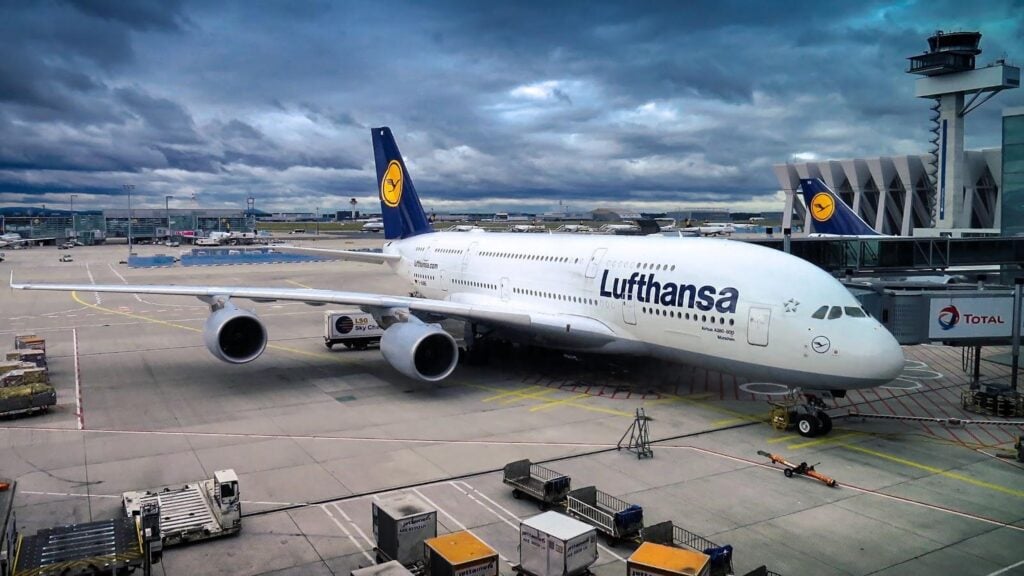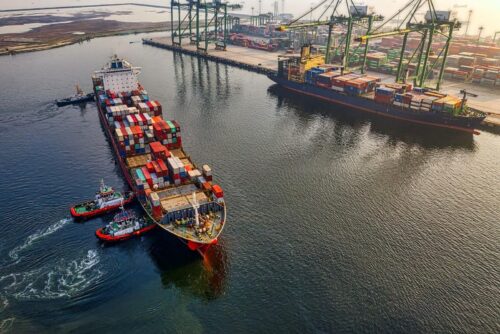Freight Management: Definition, Modes of Transportation, and Important Terms

Navigating the complex network of moving goods can be challenging. Freight management stands as the lighthouse, illuminating paths that ensure cargo reaches its destination efficiently, safely, and cost-effectively. This pivotal mechanism is not just a boon for the transportation industry but is instrumental for any business that relies on the precise and timely delivery of goods.
What Is Freight Management?
Freight management is a strategic system to optimize the efficiency of freight and commercial transport.
Originating in the era of expansive rail networks, it has evolved exponentially with the advent of new transportation modes and technology.
It encompasses everything from planning and organizing to monitoring the transportation of goods, ensuring that cargo is delivered from the starting point to the right destination, on time, and in optimal condition.
Today’s growth in the transportation industry has brought to light the importance of intermodal transportation. Leveraging different modes, shippers choose the most efficient route to deliver freight, optimizing the supply chains and reducing freight payment complexities, especially for international shipments.
A blend of technology, logistics expertise, and meticulous operations ensures that goods easily traverse complexities.
Modes of Transportation for Freight Management

Transporting freight involves many options, each tailored to specific needs and types of cargo. While road transportation often emerges as a ubiquitous choice due to its flexibility, other modes are equally pivotal, carving their niche in the vast freight transport landscape.
Air
Air freight is synonymous with speed and efficiency, catering to industries that deal with perishable goods or items of high value. The technology and pharmaceutical sectors often leverage air freight for its rapid transit times and heightened security protocols.
Rail
Rail transport, a staple in freight management, is lauded for its reliability and capacity to handle substantial cargo volumes. It’s a favorite among industries dealing with bulk commodities, including agriculture and mining.
Road
Road freight serves as the backbone of last-mile deliveries, offering unparalleled flexibility. It’s pivotal in retail and e-commerce, where tailored delivery schedules and destinations are paramount.
Water
Water transport shines in handling massive, heavy cargo over long distances. The oil and machinery industries often opt for this mode, capitalizing on its cost-effectiveness and capacity.
While technically not a mode of transportation, private carriage is a critical part of freight management. Private carriage ensures businesses, tiny businesses, have more control over their freight information, leading to tailored solutions that make their logistics a top priority.
Why Is Freight Management Important For Your Business?
Freight management is more than a logistic necessity—it’s a strategic asset. It’s pivotal in curating tailored, efficient transport solutions that meet specific shipping needs. By optimizing shipping costs and enhancing customer satisfaction, it transforms logistical challenges into competitive advantages.
What Is Visibility and Transparency?
In the world of logistics and freight management, these two terms are a common sight.
Visibility
Visibility in the supply chain refers to the accessibility of real-time data and information regarding the movement and status of goods from the point of origin to the final destination. It’s a window into every logistic nuance, offering insights and control over the freight’s journey.
Transparency
On the other hand, transparency is the extent to which stakeholders, including customers and partners, can access this information. It builds trust, as stakeholders know the processes, decisions, and outcomes throughout the supply chain.
In the transportation industry, freight brokers play a pivotal role in enhancing this transparency. By acting as intermediaries, they ensure shippers choose the best carriers and streamline freight information, thereby making the freight payment process smoother.
Best Practices for High Visibility and Transparency
Cultivating visibility and transparency isn’t incidental—it’s orchestrated. It begins with leveraging technology like freight management software that offers real-time data on cargo status.
Incorporating technologies like artificial intelligence and blockchain enhances data accuracy and security.
Collaborating closely with freight forwarders and contract carriers, ensuring that communication lines are always open and customs clearance and information flows seamlessly, is also pivotal.
Moreover, establishing protocols to share this information with stakeholders ensures that transparency isn’t just a term but a tangible asset enhancing customer satisfaction and operational efficiency.
Furthermore, in the dynamic transportation industry, small business logistics often need to adapt quickly. Employing a freight broker can assist in ensuring high visibility, especially when urgent decisions are required to deliver freight efficiently.
Important Freight Management Terms to Know

As we delve deeper into the intricacies of freight management, understanding the lexicon is paramount. These specialized terms, akin to the cogwheels in a well-oiled machine, contribute to the seamless operation of freight management systems.
Transportation Management System (TMS)
A Transportation Management System (TMS) is a cornerstone in freight management, offering an automated and streamlined platform to plan, execute, and optimize the movement of goods. It acts as a lynchpin, connecting shippers, carriers, and receivers. With TMS, businesses can plan routes efficiently, monitor freight in real time, and analyze performance data, driving cost savings and efficiency.
The Internet of Things (IoT) Technology
The Internet of Things (IoT) encapsulates the network of physical objects embedded with sensors, software, and technologies to connect and exchange data with other devices and systems. In freight management, IoT ensures real-time tracking, monitoring conditions, and automating processes, enhancing visibility, efficiency, and customer satisfaction.
The Routing Guide
The routing guide is the blueprint of freight operations, outlining carrier selection and shipping protocols. It’s a dynamic document, adapting to market changes, ensuring optimal carrier selection, cost-efficiency, and adherence to service requirements. It’s a catalyst for informed, agile decisions, aligning with the dynamic nature of freight movement.
Trucking Spot Market Rate
The Trucking Spot Market Rate is the prevailing real-time pricing framework for trucking services, influenced by demand and supply dynamics. Businesses can gauge this rate through online platforms, brokerages, or direct consultations with carriers. It’s instrumental for shippers to align with budget constraints and market trends.
Preferred Shipper
A preferred shipper is a business distinguished for its efficient, shipper-friendly practices, earning favor from carriers. This status is a badge of honor and a ticket to cost-effective, priority services. Being a preferred shipper translates to better rates, enhanced service levels, and increased carrier loyalty.
Freight Management Partner
A freight management partner is a lighthouse in the complex waters of freight operations. This entity takes the reins, managing all aspects from planning, and routing to monitoring, ensuring goods are delivered efficiently and cost-effectively. They are the custodians of shippers’ interests, driving cost savings, and elevating operational efficiency through expertise and technological integration.
Final Thoughts
Navigating through the world of freight management unveils a landscape where efficiency, cost savings, and reliability are not just goals but imperatives.
With technologies like TMS and IoT steering the ship, and guides like routing guides mapping the course, the journey from the shipper to the receiver is not just a physical transfer of goods but a well-choreographed dance of technology, logistics, and strategic partnerships.
Each term, each process we’ve unraveled, underscores the intricate yet harmonious symphony of movements, technologies, and alliances that make freight management a linchpin in the global supply chain.
Every shipper, carrier, and freight management partner is a note in this symphony, contributing to the melody of a world where goods move with precision, speed, and reliability.
